PAST ISSUES
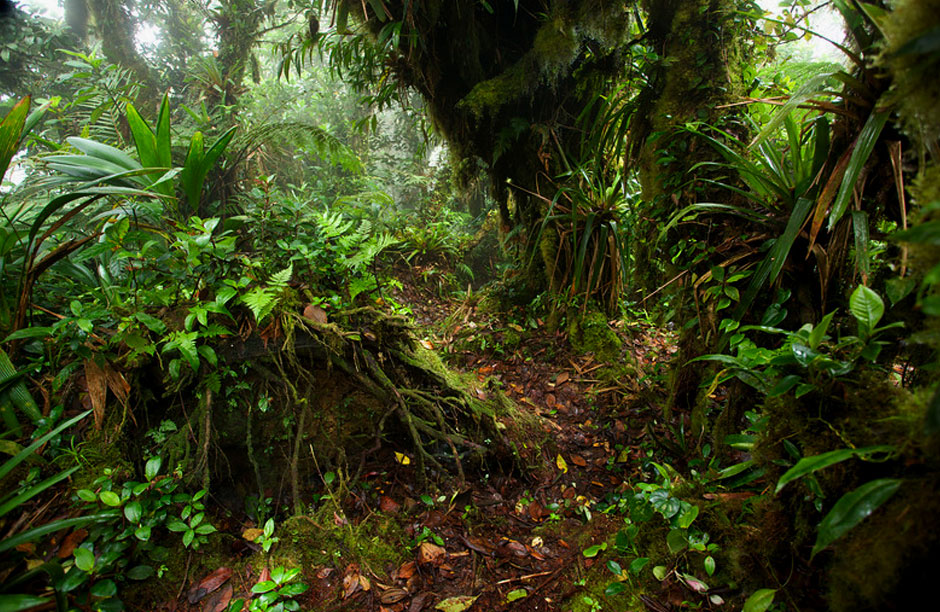 The lush rain forest of the Darien Gap in Panama
The lush rain forest of the Darien Gap in Panama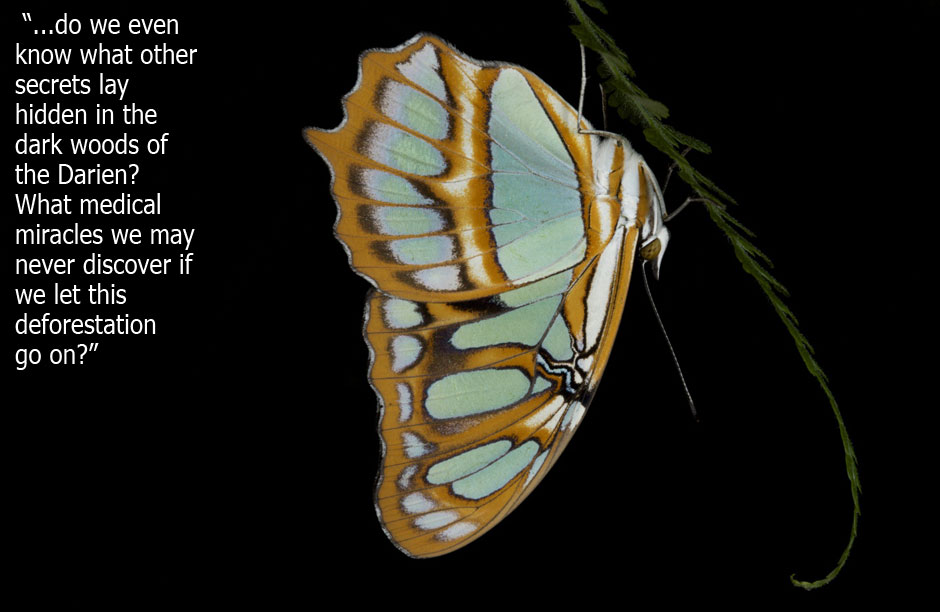 Image Anand Varma
Image Anand Varma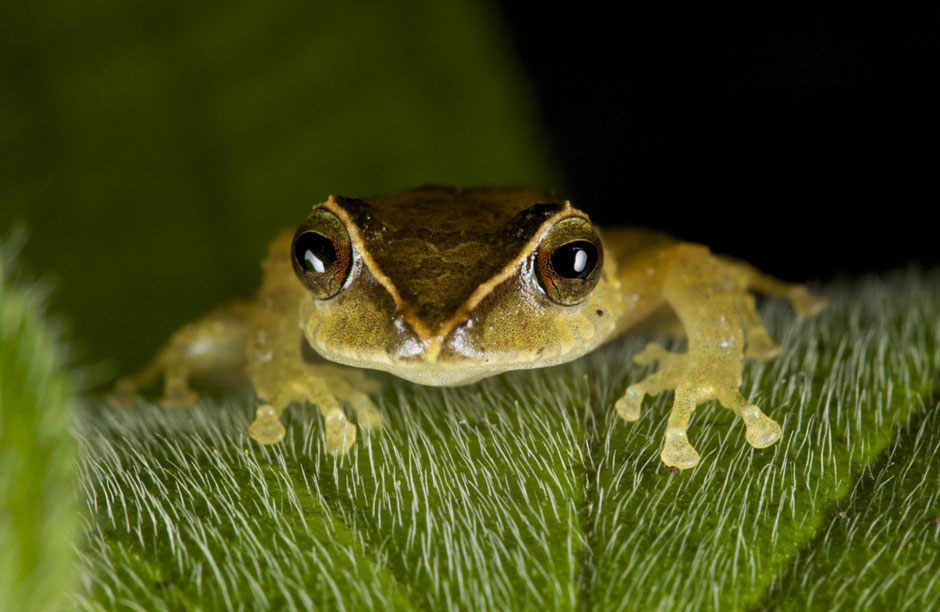 Image by Anand Varma
Image by Anand Varma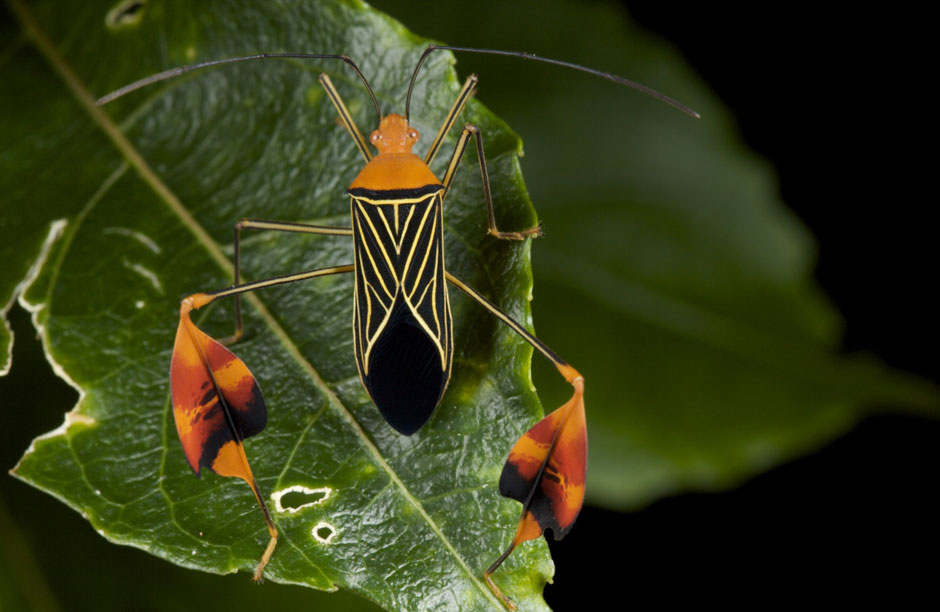 Flag Footed Bug. Image by Anand Varma
Flag Footed Bug. Image by Anand Varma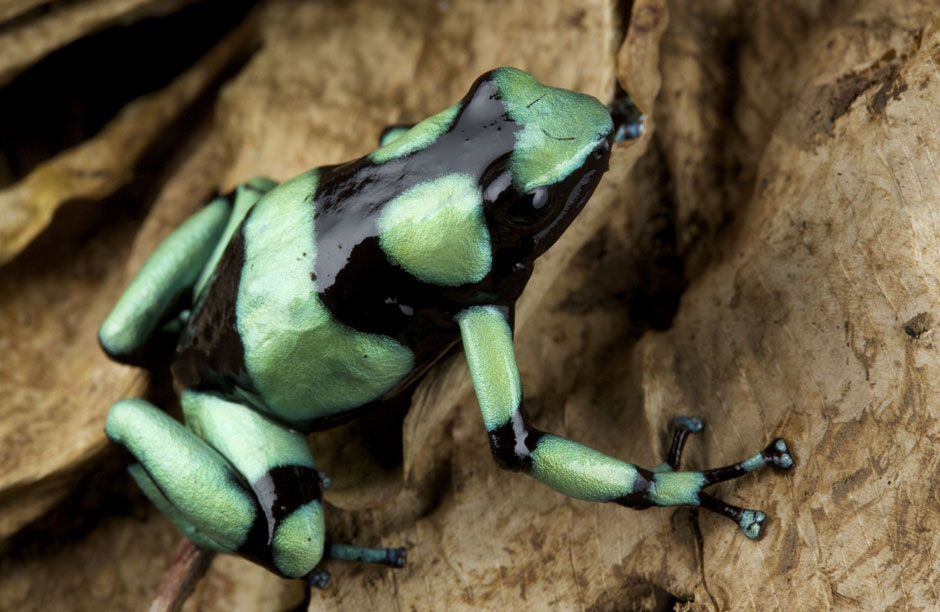 Green and Black Poison Dart Frog. Image by Anand Varma
Green and Black Poison Dart Frog. Image by Anand Varma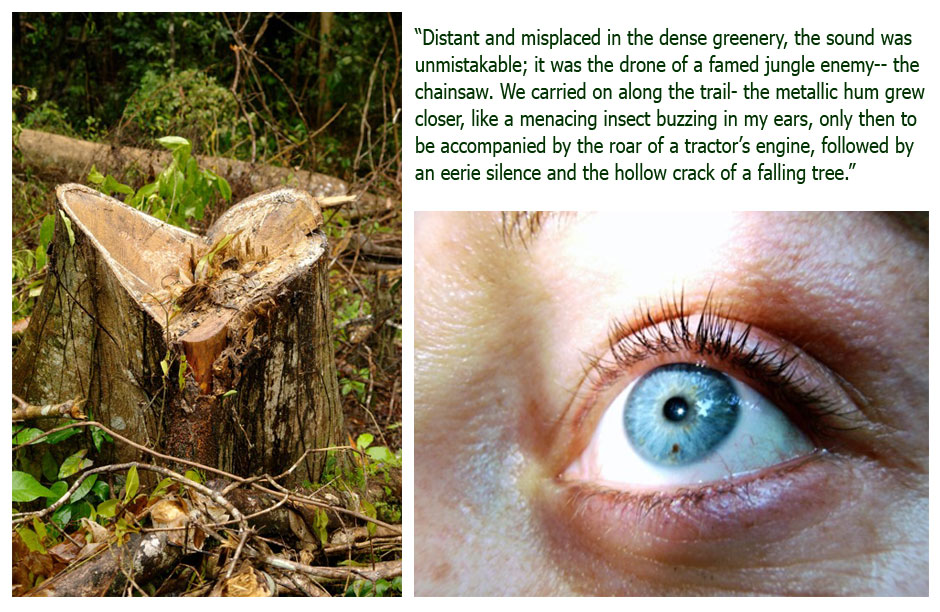
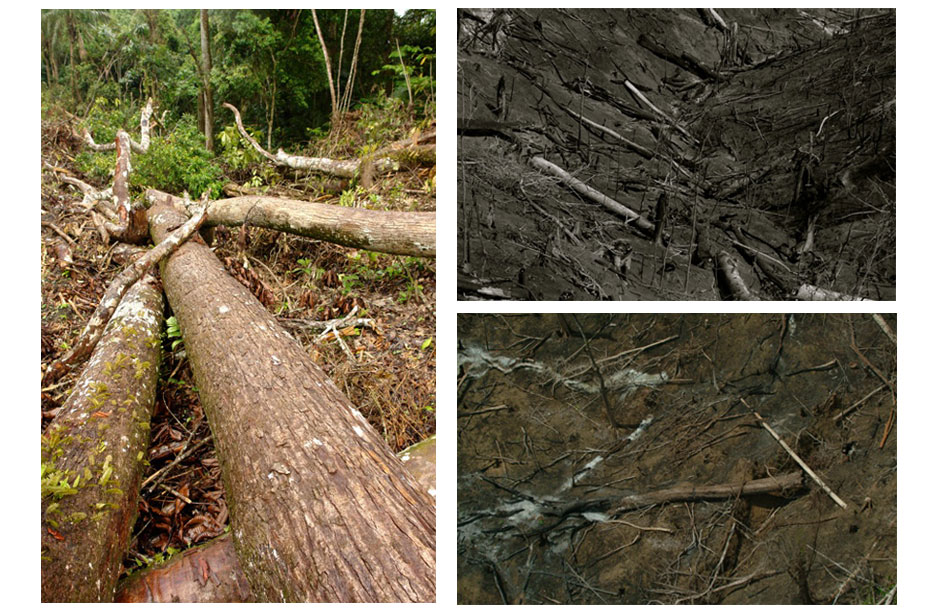
In the Breathing Gap
By Vanessa BoshoffIt was hot and sticky, weighted with humidity, the kind of air you only inhale deep in tropical jungles as I straddled my not-so “trusty looking steed”. We had already traveled as far as the road would take us by car, 3 hours from the sooty high-rises of Panama City by way of a stretch of road constricted by pot holes and cattle crossings. As soon as we left the city, my dreams of the tangled dark forests of Panama’s famed Darien Gap quickly dissipated as the landscape opened up to vast clear cuttings littered with cattle pastures, and the road seemingly transformed into a parade ground for rusty semi trucks hauling large ancient logs.
We were headed to the Chucanti Biological Field Station to film the unique flora and fauna of a private reserve in the western Darien, and to investigate the deforestation happening far from the publics’ eye.
The destination, Cerro Chucanti, hid its summit shyly beneath quick moving shrouds of mist as our funky procession of cameramen, gear strapped horses and porters moved up the impossibly muddy trail. I smiled as I caught a glimpse ahead of what I imagined the Darien should be… impassable, dark, and untamed.
Our guide, Guido Berguido, a Panamanian biologist, discovered this piece of earth on a research expedition; “My idea on purchasing this land was that we would create a buffer zone to the proposed Chucanti National Park, so that people don’t clear cut the forest before the park is legally protected. The area is under great pressure for slash-and-burn farming, poaching, illegal logging, and extensive deforestation for cattle grazing. Uncontrolled clearing is also affecting the watershed, which supply nearby villages, so we need to help both the forests and the communities. With this land we can also show locals how they can make a living off scientific studies and eco-tourism instead of logging and clear cutting.”
Chucanti is a success story, a protected island of jungle rising to 4,600 feet above sea level, ranging from mangrove forests on the Pacific coast, to lowland tropical rainforest, to mid-elevation forest, and finally to the misty cloud forest on the mountain’s peak. This area, one of the most bio-diverse places in Central America, represents several important ecosystems that occur in the Darien and is just now being studied by Smithsonian scientists and biologists from around the world.
With Guido in the lead, the trail rose higher, winding around trees that 5 people could circle their hands around, and the air seemed to grow, dare I say, lighter? As higher altitude gave relief from the oppressive heat, I speculated, being surrounded by such pristine plants, if every gulp of air I took was filled with more oxygen, as I felt my lungs being purified as I breathed in the cooler atmosphere.
Just then a familiar buzz hummed through the leaves, disturbing the natural ambience of birds and insects. Distant and misplaced in the dense greenery, the sound was unmistakable; it was the drone of a famed jungle enemy– the chainsaw. We carried on along the trail- the metallic hum grew closer, like a menacing insect buzzing in my ears, only then to be accompanied by the roar of a tractor’s engine, followed by an eerie silence and the hollow crack of a falling tree.
I was irritated at the very thought of machinery so far up in the jungle, and with a curve in the path, the evidence was in plain sight. Far from any road or access point, in the middle of seemingly nowhere, was a yellow tractor perched precariously on the hillside. They had already cleared at least an acre of the forest, and the fallen leafless soldiers lay in a pile- ready to be transported to some final foreign resting ground.
“How can this happen – this is a protected area, right? And more so – how do those machines even get up here?” I demanded answers from no one in particular.
“I am not sure this logging is legal, but here- no one can really prove anything. It is like the Wild West, Panama turns it’s back on what goes on down here.” Guido admitted and my heart sank at the thought of the encroaching machines upon the innocent helpless forests.
That was the reality, no one was there to manage the logging, and no one seemed to really care. This was the forgotten gap of Panama, the dangerous area where no roads can pass, where myths of drug lords and guerilla warfare reign – but the truth is, the Darien has some of the most amazing yet overlooked jungles in Latin America.
After 2 hours on the trail, we had reached Chucanti’s base and the disturbing sounds of the deforestation project had disappeared. An orchestra of a flowing stream and rustling leaves seemed to be the only accompaniment to our voyage now. It was time to tie up and carry on by foot, as the trail became a dark cave carved from the draping leaves with sticky vines that brushed my head as I walked. Bright poison arrow dart frogs scattered from the trail and disappeared into the mossy undergrowth. I had never seen such frogs! Cloudy grey ones with turquoise racing stripes, dazzling emerald spotted ones and teeny-tiny bark colored ones- ½ the size of my thumbnail. It was if the trail itself was alive and moving, as insects and small creatures of an incredible variety jumped from the way of my mucky boots.
“Step lightly, these trails are used by many more species then just us.” Guido warned.
“Lookout!” I whispered harshly, grabbing the cameraman by his shirt. A carefully camouflaged constrictor lay coiled peacefully in the middle of the trail, his scales mimicking the leaves that lay around him. “Incredible!” I marveled, for in just a few steps within the private reserve of Chucanti, I had come across a myriad of species, and we hadn’t even made it to the research station yet!
These forests, protected from the sharp metal hands of man, house a thriving population of species new to science, from wispy white orchids to thorny legged insects to sub species of spider monkeys and sneaky minuscule amphibians- do we even know what other secrets lay hidden in the dark woods of the Darien? What medical miracles we may never discover if we let this deforestation go on? The truth is, little study has been done here, so we have no idea what we are losing with every tree cut from this silent Gap hidden on the Colombia border.
I sighed deeply, inhaling and exhaling the thick air- tasting my humid breaths, enthralled by the sights and sounds of this magical jungle. The forests are the lungs of our planet, their broad leaves capturing carbon dioxide and converting it into clean, breathable air for us — so why do we allow this cancer of deforestation to spread? It became clear to me at my first sensation of dense Darien air, that not just the trees and animals are at risk, it is our own breath that is at stake.